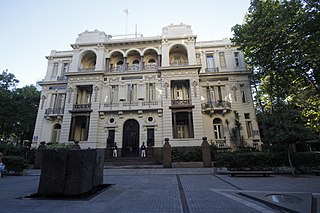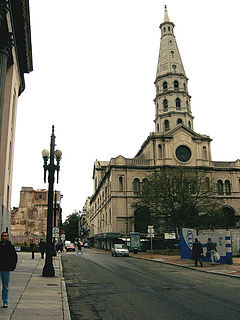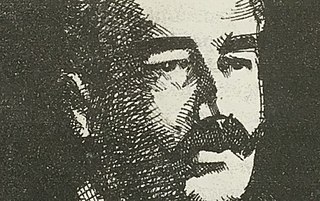Related Research Articles

Antonio Palacios Ramilo was a Spanish architect. Distinguished by the monumental eclecticism he left as imprint in many of his projects, he helped define the architectural identity of Madrid in the first half of the 20th century.

Prado is a barrio and a major public park in Montevideo, Uruguay. Together with Nueva Savona, they form the Prado - Nueva Savona composite barrio. Prado is also the name given to all the park areas on both sides of Miguelete Creek, limited by the bridge of Agraciada Avenue over the river to the south and by Millan Avenue to the northeast.

Centro is the inner city barrio of Montevideo, Uruguay. Its main avenue is 18 de Julio Avenue. It is delimited by La Paz Str. to the North, Florida Str. and Andes Str. to the West, Canelones Str. to the South and Barrios Amorin Str. to the East. It used to be the main commercial venue of the city, but after the opening of the first malls, many small stores started closing down. Now, that process is being reverted and the area is coming back to life.

The Legislative Palace of Uruguay is a monumental building, meeting place of the General Assembly of Uruguay, and the seat of the legislative branch of the Uruguayan government. It is located in the barrio of Aguada in the city of Montevideo.
Luigi Andreoni or Luis Andreoni was an Italian engineer and architect of outstanding performance in Uruguay.
Julio Vilamajó Echaniz was one of the best known Uruguayan architects. He was a member of the Board of Design Consultants for the construction of the United Nations headquarters together with Le Corbusier and Oscar Niemeyer.

The Piria Palace is the headquarters of the Supreme Court of Uruguay. Located on the south side of the Plaza de Cagancha in Montevideo, on the Human Rights Passage, it was declared a National Historical Monument in 1975. In front of its main entrance is the Monument to Justice, a work by Rafael Lorente Mourelle.
Juan Giuria (1880-1957) was a Uruguayan architect and architectural historian.
Aurelio Lucchini was a Uruguayan architect and architectural historian.

Lauro Ayestarán was a Uruguayan musicologist.

The Parish Church of St. Francis of Assisi is a Roman Catholic parish church in Montevideo, Uruguay.
Víctor Rabu was a French architect.

Maika Ceres is a Uruguayan/German classically trained lirico-spinto soprano singer and songwriter. She currently resides in South Lower Saxony, Germany with her husband and children.
Joseph Paul Adrien Carré was a French architect practicing in Uruguay.
Alfredo Jones Brown was a Uruguayan architect.
Carlo Zucchi was an Italian architect.
María Esther Gilio was a Uruguayan journalist, writer, biographer, and lawyer, distinguished for her contributions to newspapers of Uruguay and Argentina. She also wrote for publications in Brazil, Mexico, Spain, France, Italy, Chile, and Venezuela.
Claudia Josefa Palacios González was an Uruguayan painter and miniaturist of the nineteenth century. She is best known for creating the first visual representation of Uruguayan independence episode known as Desembarco de los Treinta y Tres Orientales.

John Adams was a British architect, active in Uruguay at the end of the 19th and beginning of the 20th century.
References
- ↑ César J. Loustau (1 January 1995). Influencia de Francia en la arquitectura de Uruguay (in Spanish). Ediciones Trilce. p. 191. ISBN 9974-32-116-6.
- 1 2 3 Au gré des jours en Uruguay - Architecte : Camille Gardelle (in French)
- ↑ Breve historia del Castillo Soneira (in Spanish)
- ↑ Palacio Piria (in Spanish)